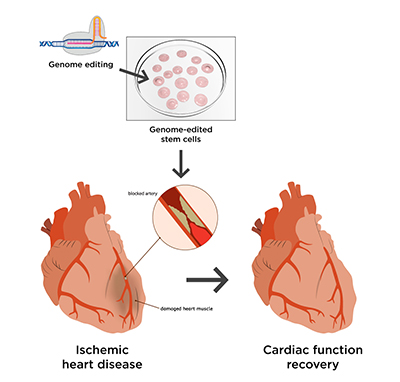Cardiovascular Disease
The unhealthy heart
Cardiovascular disease (CVD) involves various pathologies of the heart and blood vessels, and is the leading cause of death globally. While many distinct forms exist, CVD can be broadly categorized into a half dozen major conditions.
- Coronary heart disease – A condition of the coronary arteries resulting from blocked blood flow to the heart muscle; typically caused by buildup of obstructive, fatty-deposit “plaques” within vessels. Partial blockage can cause angina (chest pains), while a completely blocked coronary artery can result in coronary infarction (heart attack); also known as “ischemic heart disease.”
- Cerebrovascular disease – Blocked or reduced blood circulation within blood vessels of the brain; major types of cerebrovascular disease, or stroke, include:
- Transient ischemic attack (TIA) – a blockage with effects lasting less than 24 hours
- Cerebrovascular thrombosis (clot) – a more severe event where a complete blockage damages brain tissue and results in long-term effects
- Peripheral arterial disease – Results from restricted blood flow to arteries in the limbs, typically the legs; the most common symptom is aching pain in one or both legs when walking. Also known as peripheral vascular disease.
Other CVD and vascular disorders include:
- Arrhythmias (changes in the heart’s normal beating behavior)
- Rheumatic heart disease (muscle and valve damage from Streptococcus bacterial infection)
- Congenital heart disease (abnormal development and function caused by birth defects)
New technologies for better heart health
The adult heart is one of the least regenerative organs in the body, and damage to heart tissues, whether from progressive conditions or punctuated events such as heart attacks, does not heal easily. In the ongoing effort to improve prospects and prognoses, recent medical and technological advancements have shown promise on several fronts:
- Cardiac tissue fabrication – Cardiomyocytes (CMs) are heart muscle cells that have traditionally been difficult to culture in the lab. New three-dimensional “scaffold substrates” in development hold promise for the more effective growth and maturation of these specialized cells.
- Genome editing – A stem cell-based therapy used to repair gene mutation, facilitate maturation of CMs and possibly reveal useful information about their genetic instruction set for apoptosis (programmed cell death).
- Machine learning – The use of self-improving computer algorithms to characterize differentiated, stem cell-derived CMs during and after maturation

References
4 Types of Heart Disease — and How to Help Prevent Them. Keck Medicine of USC. Available from URL: https://www.keckmedicine.org/.
Cardiac Tissue Engineering: Current State-of-the-Art Materials, Cells and Tissue Formation. PubMed Central (PMC). Available from URL: https://www.ncbi.nlm.nih.gov/.
Cardiovascular Disease - Illnesses & Conditions. NHS Inform. https://www.nhsinform.scot/.
Cardiovascular Diseases (CVDs). World Health Organization, https://www.who.int/.

